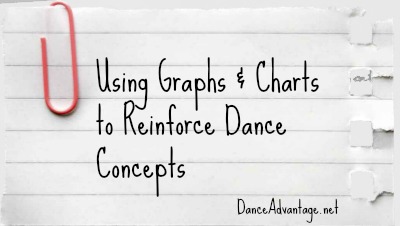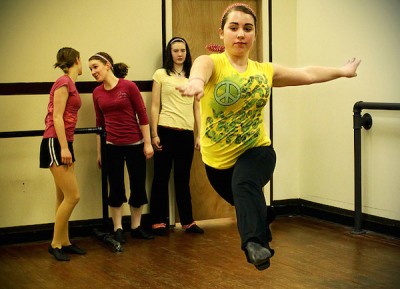Over the last few weeks, I have received some terrific questions on past articles that really deserve a post of their own.
Here are a few:
In response to Graphs and Charts in the Classroom:
“How much time do you spend on visual aids, etc. in a normal class?”
 The amount of time I spend on visual aids depends on the type of visual aid, the lesson, and the level of familiarity students have with the visual aid.
The amount of time I spend on visual aids depends on the type of visual aid, the lesson, and the level of familiarity students have with the visual aid.
For example, in the beginning of the year, I spend more time explaining how to use the aid to organize information as well as the information itself. So, usually within a 45-minute class period, of a class that meets daily, I may spend 20 minutes.
However, as we progress through the year, and the students become comfortable with the type of aid, this goes much faster – even as little as 5-10 minutes.
In response to Managing the Middle School “Shut-Down”:
“I can so feel you – Middle School definitely is a difficult age. I love that you pointed out how strict Middle Schoolers can be when it comes to styles! It is something I have experienced for a while but have never quite named so. I think it is because these kids are finding themselves and as that is a difficult age to do at that age they label themselves and everything around them. But I love the aspect of dancing without styles, definitely gonna add that to my classes next semester. Just one question: How do you call those classes?”
I simply refer to these classes as technique classes.
We explore “anatomy in action,” identifying how the body moves in isolation and as a whole, explore the physics of movement, discuss theory, and more. Lately, we have started to discuss “styles” but we do so from a critical perspective first.
I ask them to pull out pictures from magazines that represent as many styles of dance possible. We then sort and classify the pictures, while critically thinking and verbalizing how we’ve arrived at these labels.
- What are the attributes of the lines of the body?
- How are we imagining the movement that would come right before or right after this frozen shape?
- Why do we associate these things with the chosen labels?
Then, we compare these attributes (isolation, quality, alignment…) to what we know about these concepts and talk about cultures within dance: commercial, concert, traditional, ritual, ethnic, genre-based…
We also talk about the other arts elements, such as music and costuming, that come up as we identify trends.
We discuss dance as a primary art and when it is secondary; how the relationships between the arts can and should be determined by the project and the artists involved.
“There are two more problems I have with my Middle Schoolers right now: First, I have a Jazz-class and as they are beginners I like to do lots of isolations to introduce them to the style. I have experienced though that especially young girls become extremely body-aware in this time and are afraid when it comes to ribcage/hip-isolation. I am going to give it a try next semester by labeling these body parts as “ribcage” etc. instead of what they might be thinking of. Still, would you enforce isolations or due to the age start with a different part of jazz technique?”
Isolations are such a large part of jazz that they can’t be avoided, nor should they.
I never really shy away from movement with any age group but I do consciously consider how much time I spend on movement that may make students uncomfortable. To use your example of rib and hip isolations, we may spend more counts isolating other parts of the body while we still include the ribs and hips within the series.
Talking about the body anatomically is a great way to neutralize fears, provide valuable information applicable to dance as well as other subject areas, and nurture positive body awareness. Focusing on the skeletal and muscular structures pave the way for discussing injury prevention and can inspire further study into kinesiology and physiology. Future career interests can be awakened and all because we are teaching “isolations” in a thoughtful way.
I also find this method of teaching allows students to connect ideas across genres and deepens our conversations in technical theory and performance methods.

“Also, I feel like Middle Schoolers tend to leave their creative dance – comfortable zone really fast. The younger ones often are delighted when they get to be creative, but after about half a year in Middle School they usually want to be like the “teens”. To them, this means learning longer and “cooler” combos in class, but it does certainly not mean to them no longer playing freeze dance at the end of the lesson and doing a lot of technique exercises like my teens do. I have made the experience that they really want to move on but feel like I am the one holding them back as I want to rely on technique etc. Do you have any advice for me?”
If you are finding your tweens are wanting to dabble in both worlds- creative movement and longer movement phrases, try it and see how it feels. I would likely turn technique into a phrase that also includes some creative problem-solving, or task-based prompts.
I think often teachers fall into the trap of approaching technique as a series of very serious actions. There is no reason, though, that technique needs to always be scripted or serious!
Here is what I mean:
If you tend to teach warm-up as a series of exercises, try linking them together to develop an actual movement phrase. Add a few other important elements: a turn, an extension, level change- high and low, rhythm change, and directional change and all of a sudden technique becomes a cooler, longer phrase.
Further the work by adding a change of music with each run in order to change quality, or ask students to think of the phrase in terms such as over, under, around, and through.
Allow them to modify the phrase- add locomotor movement between movements, add stillness, or emphasize their favorite parts- to suit their needs and creative voices .
Take turns watching in small groups. Now technique has moved into structured improvisation and choreography. They could even try stylizing the technical components as they would appear in various genres of dance.
Not only will your students understanding of dance deepen, your understanding of them as artists and people will, too.
I hope this answers your questions AND continues the conversation.
Check out my other articles and join the discussion!
Heather Vaughan-Southard MFA, is a choreographer, dance educator, and performer based in Michigan. She currently directs the dance program at the Everett High School Visual and Performing Arts Magnet in Lansing. With the philosophy of teaching dance as a liberal art, Ms. Vaughan-Southard collaborates with numerous arts and education organizations throughout the state. She has danced professionally in Chicago, Detroit, Los Angeles, and New York and has performed works by Mia Michaels, Lar Lubovitch, Donald McKayle, Billy Siegenfeld, Alexandra Beller, Debra Levasseur-Lottman, and Bob Fosse. As a choreographer, her work has been credited by the Los Angeles Times for “creating heat.” She has recently choreographed for the dance programs at Michigan State University, Grand Valley State University, Lansing Community College and is the former dance professor at Albion College. She is a regular guest artist and blogger for Dance in the Annex, an innovative dance community in Grand Rapids. Heather received her MFA in Dance from the University of Michigan, BFA in Dance from Western Michigan University and K-12 certification in Dance from Wayne State University. Read Heather’s posts.

